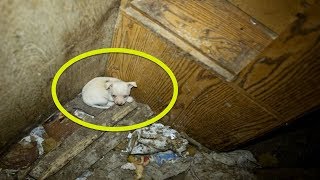Monday, 22 December, 2025г.
















Где искать: по сайтам Запорожской области, статьи, видео ролики
пример: покупка автомобиля в Запорожье
The Bible Said A Firestorm Destroyed This City Now Archaeologists Can Prove It Actually Happened
Do not forget to visit the channel WATCHJOJO ANIMALS https://goo.gl/438CPy
►israeltourism / YouTube/Israel Antiquities Authority Official Channel https://goo.gl/ngYB8M
contact us at:[email protected] http://watchjojo.com
**************************************************************
In July 2017 Israeli archaeologists excavated a rockslide on the eastern slopes of the ancient city of Jerusalem. Digging into centuries of sediment, they discovered a trove of priceless artefacts – and incredibly, they appear to confirm the Biblical account of the city’s destruction.
The discovery was made by the Israel Antiquities Authority supported by the City of David Foundation – Elad. Established in 1986, Elad is a non-profit organization committed to the conservation of the “City of David” – an archaeological site believed to encompass ancient Jerusalem before its destruction.
Objects recovered from the dig included pottery, fish remains and bones, seeds and burnt wood, as well as several ornamental artefacts. The craftsmanship of these pieces suggests that the former Judean capital was a sophisticated place at the time of its fall with cultural ties to various distant civilizations.
For example, the artefacts included a small but exceptionally rare ivory statue of a naked woman with an Egyptian hairstyle. “The quality of its carving is high,” the Israel Antiquities Authority noted describing the piece, “and it attests to the high caliber of the artefacts’ artistic level and the skill par excellence of the artists during this era.”
Dozens of receptacles were also recovered from the site, including jugs once used to hold liquids or grains. Significantly, one of them was marked with the symbol of a rosette, placing it within a specific timeframe – the so-called “First Temple Period” which ran from the 10th century to 586 B.C.E.
According to Dr. Joe Uziel and Ortal Chalaf, excavation directors from the Israel Antiquities Authority, “These seals are characteristic of the end of the First Temple Period and were used for the administrative system that developed towards the end of the Judean dynasty. Classifying objects facilitated controlling, overseeing, collecting, marketing and storing crop yields. The rosette, in essence, replaced the ‘For the King’ seal used by the previous administrative system.”
Meanwhile, the excavations also exposed several structures that were previously hidden under the collapsed stone, indicating that the ancient city may have been much larger than was previously thought. In fact, the area beyond the city walls was believed to have been uninhabited until this recent discovery.
“The excavation’s findings unequivocally show that Jerusalem had spread outside of the city walls before its destruction,” said Chalaf and Dr. Uziel. “A row of structures currently under excavation appears beyond the city wall that constituted the eastern border of the city during this period.”
“Throughout the Iron Age, Jerusalem underwent constant growth, expressed both in the construction of the city wall and the fact that the city later spread beyond it,” they added. “In the current excavation, we may suggest that following the westward expansion of the city, structures were built outside of the wall’s border on the east as well.”
Meanwhile, numerous charcoal deposits have been identified in the excavated layers of the site, suggesting that Jerusalem was destroyed in a great fire. In fact, ancient Jerusalem suffered two major destructions and the artefacts recovered from the site relate to its first destruction in 586 B.C.E.
At that time, King Zedekiah ruled over Judea under the Neo-Babylonian king Nebuchadnezzar. King Zedekiah, however, rebelled and made a pact with Egypt. Babylon subsequently laid siege to Jerusalem in 589 B.C.E. and reportedly set it ablaze. In fact, an account of the event exists in the Bible’s book of Jeremiah.
“[Nebuchadnezzar] marched out against Jerusalem,” begins the account. “All his armies went with him. It was in the ninth year of the rule of Zedekiah. It was on the tenth day of the tenth month. The armies set up camp outside the city. They set up ladders and built ramps and towers all around it.”
**************************************************************
►Image credits: israeltourism / YouTube/Israel Antiquities Authority Official Channel https://goo.gl/ngYB8M
►web: http://watchjojo.com
► SUBSCRIBE US: https://goo.gl/Z4nZcg
► Follow Us On Google Plus: https://goo.gl/JYf9Rr
► Like us Our Facebook Page: https://goo.gl/C5Rv92
► Follow On Twitter: https://goo.gl/PZ2U1R
►Source : https://goo.gl/zR2iyE
Reference
http://scribol.com/anthropology-and-history/bible-said-firestorm-destroyed-city-archaeologists-prove-actually-happened/
#watchjojo
Теги:
watchjojo videos viral pictures top10 Home Page youtube trending video The Bible Said A Firestorm Destroyed This City Now Archaeologists Can Prove Actually Happened
Похожие видео
Мой аккаунт


 У вашего броузера проблема в совместимости с HTML5
У вашего броузера проблема в совместимости с HTML5


